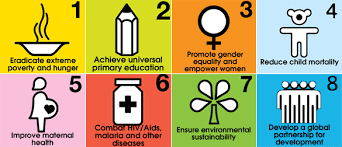Formulated by the United Nations as a blueprint for meeting the needs of the world’s poorest citizens, the Millennium Development Goals, or “MDGs” as they’re referred to, set forth a bold and comprehensive prescription for eradicating extreme poverty, achieving universal primary education, promoting gender equality, reducing child mortality, improving maternal health, combating HIV/AIDS, and protecting the environment.
Astonishingly, access to modern energy has not been included by the United Nations as one of the Millennium Development Goals, despite the fact that, without an energy component, none of the MDGs are ultimately achievable.
Didn’t they know that Energy is a Human Right?
They should’ve asked my friend Dr. Paul Farmer (Partners In Health).
He’d tell them that a reliable energy source is essential for the operation of hospitals and clinics.
With the exception of Egypt and South Africa, 85 percent of Africa’s 680 million people live in rural areas without electricity.
Diesel generators are the traditional solution — but hardly the best. Diesel is expensive and polluting, emitting greenhouse gases among other chemical compounds. And generator breakdowns are common, with replacement parts typically miles and days away.
Faced with a choice between solar and diesel at five rural health clinics in eastern Rwanda, Partners In Health took the solar path, collaborating with SELF on systems for the communities of Mulindi, Rusumo, Rukira, Nyarabuye, and Kirehe. The systems are solar- diesel hybrid systems that generate 90 percent or more of their power from the sun, with diesel generators for back-up during prolonged heavy usage, or in periods of rain.
Back to Dr. Farmer. Here’s what he said about the impact of solar power on the operations of his clinics:
“You can’t do this without electricity. Because you’re not going to have an operation room. You’re not going to have a laboratory. You’re not going to see people at night…”
